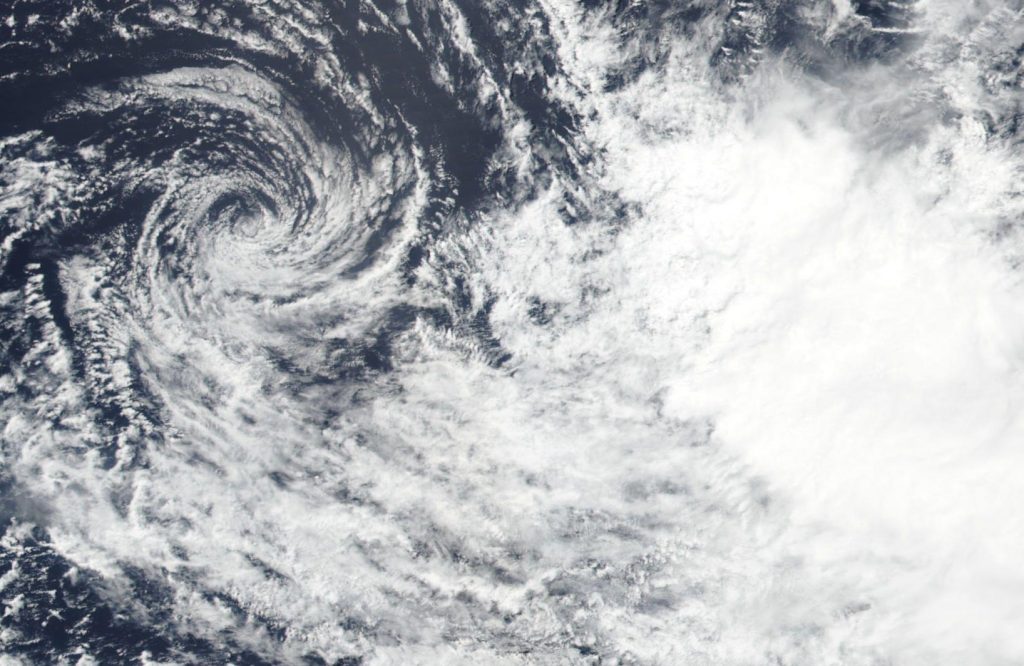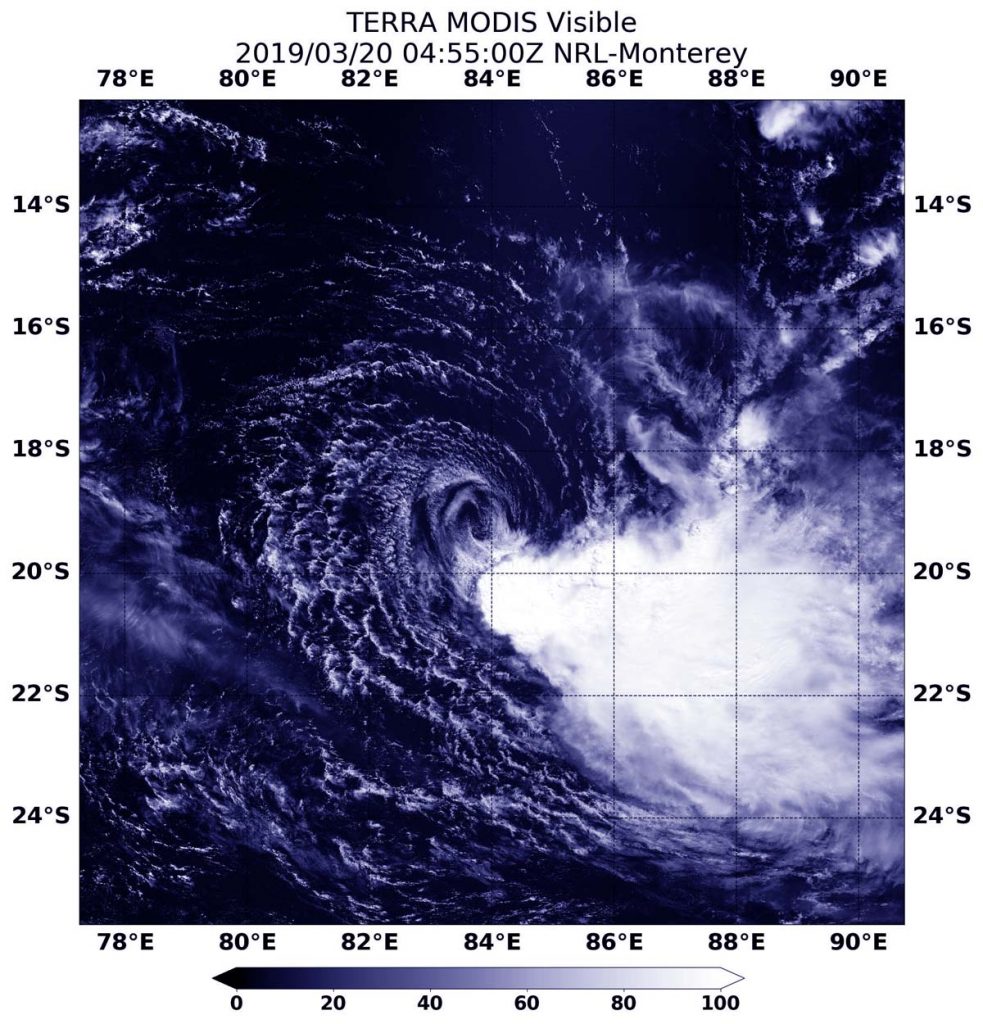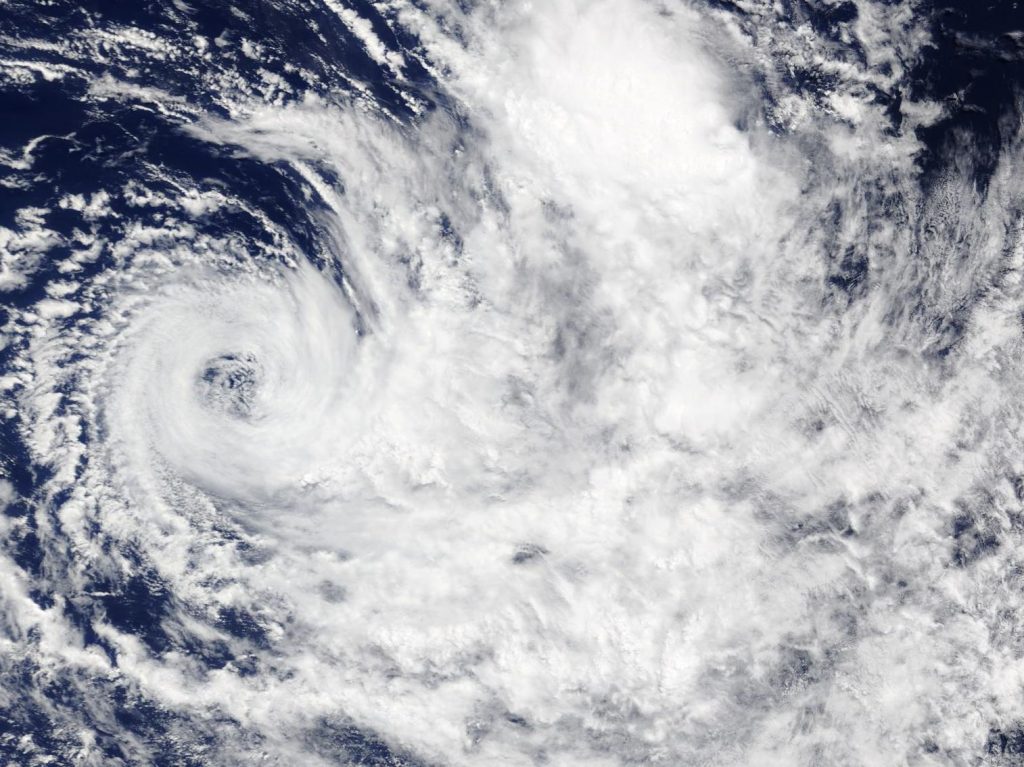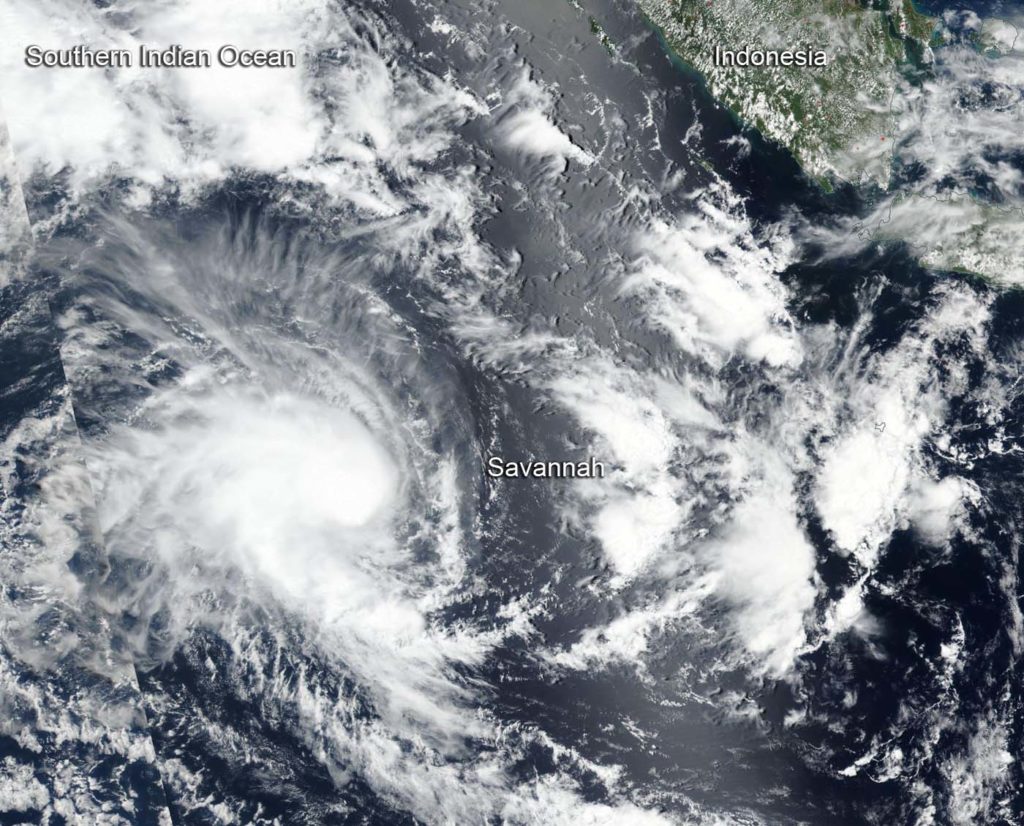Mar. 21, 2019 – Tropical Cyclone Savannah Dissipating in Suomi NPP Satellite Imagery
Tropical Cyclone Savannah appeared as a wispy area of low pressure on imagery from NASA-NOAA’s Suomi NPP satellite.

Suomi NPP passed over Savannah on March 21, 2019 and the Visible Infrared Imaging Radiometer Suite (VIIRS) instrument provided a visible image of the storm as wind shear continued to tear it apart. The VIIRS image showed wispy clouds around the center of circulation, and the bulk of clouds pushed off far from the center to the southeast. That’s because of strong vertical wind shear from the northwest of the storm.
In general, wind shear is a measure of how the speed and direction of winds change with altitude. Tropical cyclones are like rotating cylinders of winds. Each level needs to be stacked on top each other vertically in order for the storm to maintain strength or intensify. Wind shear occurs when winds at different levels of the atmosphere push against the rotating cylinder of winds, weakening the rotation by pushing it apart at different levels.
The wind shear affecting Savannah has been strong for the last couple of days.
The Joint Typhoon Warning Center (JTWC) provided the final warning on the system at 5 a.m. EDT (0900 UTC) when it was located 1,026 nautical miles southeast of Diego Garcia near
19.8 degrees south latitude and 84.3 degrees east longitude. Savannah’s maximum sustained winds had dropped to 35 knots (40 mph).
Savannah is expected to dissipate later in the day on March 21.



